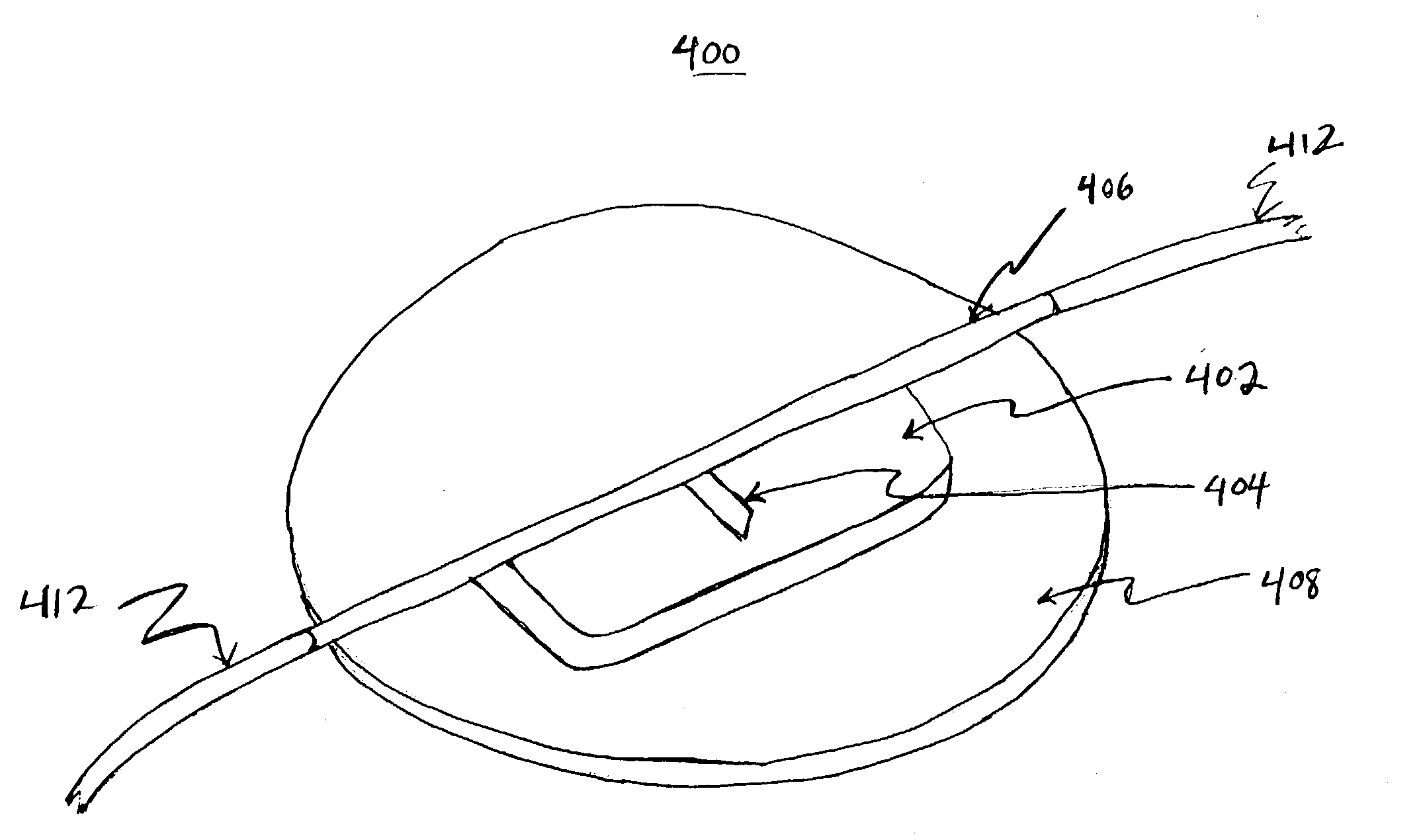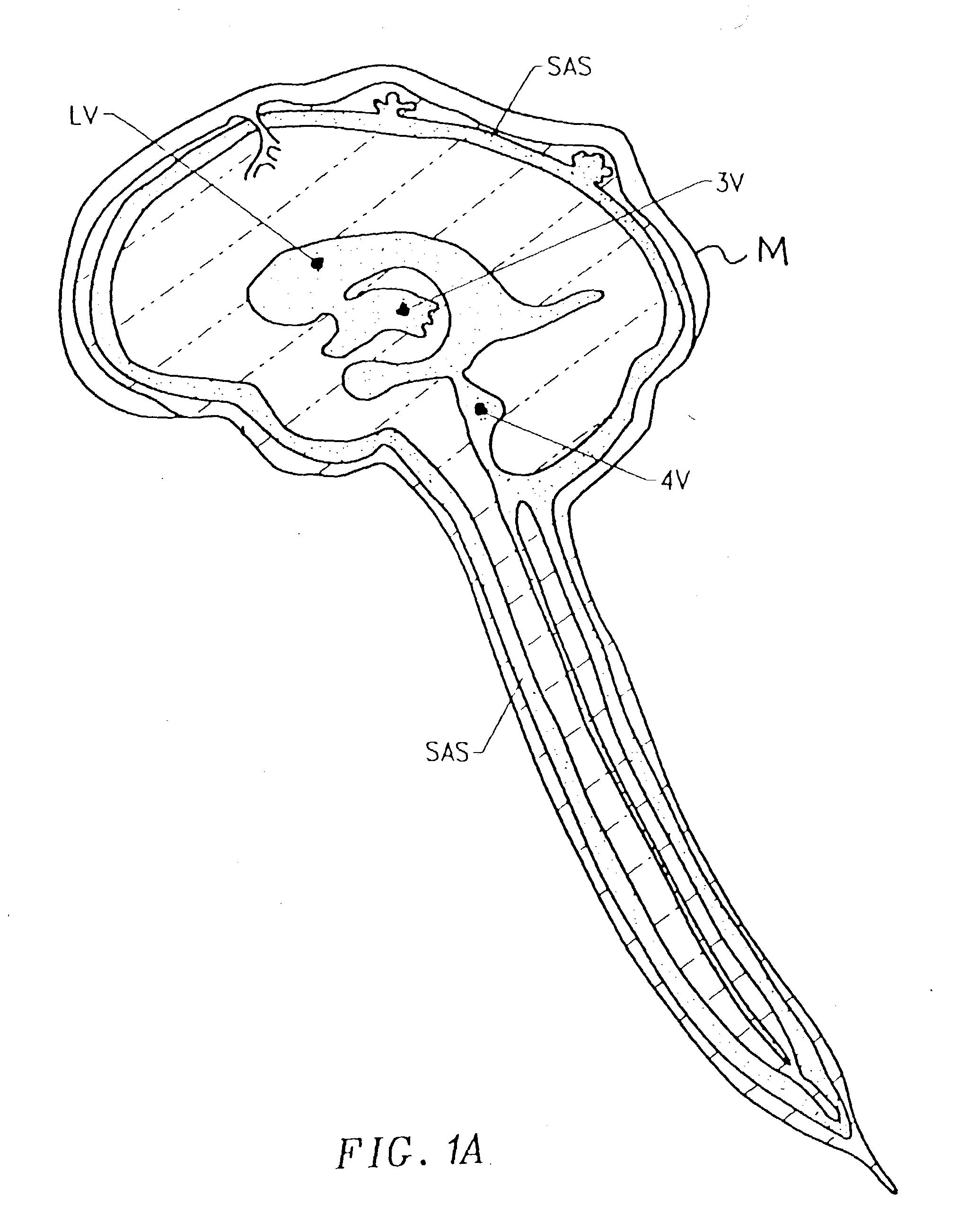Systems and methods for flow detection and measurement in CSF shunts
a flow detection and flow measurement technology, applied in the field of medical devices and methods, can solve the problems of not being able to be used for absorption or recirculation, currently available shunt systems do not include means for monitoring flow, and increase toxicity, so as to reduce the concentration of such substances, reduce the natural absorption of csf, and enhance the production of csf
- Summary
- Abstract
- Description
- Claims
- Application Information
AI Technical Summary
Benefits of technology
Problems solved by technology
Method used
Image
Examples
Embodiment Construction
[0065] A P.sub.2OBA 103 M Thermoprobe (Thermometrics www.thermometrics.com), measuring 0.5 mm long and 0.5 mm in diameter, was incorporated into a standard peritoneal catheter of 1.1 mm inner diameter. Fluid flow, controlled by maintaining a constant hydrostatic head across a fluid resistor consisting of a small-bore (approximately 0.15 mm inner diameter) tube, was monitored in real time by weighing the accumulated outflow from the system on a Setra digital scale with 1-milligram resolution. The thermistor was configured as a half bridge and was powered using a 1 to 8 volt square wave. This corresponded to mean input powers of approximately 1 mW and 0.1 mW. In this way, the thermistor could be monitored while experiencing minimal self-heating (0.1 mW input), which allowed for measurement of ambient fluid temperature, and in a self-heating mode (1 mW input) which allowed for measurement of thermal dissipation and, hence, fluid flow.
[0066] A personal computer, configured with a Nation...
PUM
 Login to View More
Login to View More Abstract
Description
Claims
Application Information
 Login to View More
Login to View More - R&D
- Intellectual Property
- Life Sciences
- Materials
- Tech Scout
- Unparalleled Data Quality
- Higher Quality Content
- 60% Fewer Hallucinations
Browse by: Latest US Patents, China's latest patents, Technical Efficacy Thesaurus, Application Domain, Technology Topic, Popular Technical Reports.
© 2025 PatSnap. All rights reserved.Legal|Privacy policy|Modern Slavery Act Transparency Statement|Sitemap|About US| Contact US: help@patsnap.com



